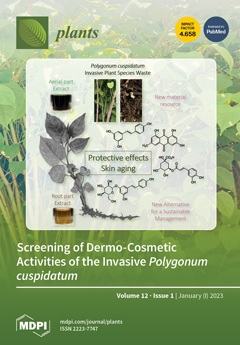Ver ítem
- xmlui.general.dspace_homeCentros Regionales y EEAsCentro Regional Mendoza - San JuanEEA San JuanArtículos científicosxmlui.ArtifactBrowser.ItemViewer.trail
- Inicio
- Centros Regionales y EEAs
- Centro Regional Mendoza - San Juan
- EEA San Juan
- Artículos científicos
- Ver ítem
How temperatures may affect the synthesis of fatty acids during olive fruit ripening: genes at work in the field
Resumen
A major concern for olive cultivation in many extra-Mediterranean regions is the adaptation of recently introduced cultivars to environmental conditions different from those prevailing in the original area, such as the Mediterranean basin. Some of these cultivars can easily adapt their physiological and biochemical parameters in new agro-environments, whereas others show unbalanced values of oleic acid content. The objective of this study was to evaluate
[ver mas...]
A major concern for olive cultivation in many extra-Mediterranean regions is the adaptation of recently introduced cultivars to environmental conditions different from those prevailing in the original area, such as the Mediterranean basin. Some of these cultivars can easily adapt their physiological and biochemical parameters in new agro-environments, whereas others show unbalanced values of oleic acid content. The objective of this study was to evaluate the effects of the thermal regime during oil synthesis on the expression of fatty acid desaturase genes and on the unsaturated fatty acid contents at the field level. Two cultivars (Arbequina and Coratina) were included in the analysis over a wide latitudinal gradient in Argentina. The results suggest that the thermal regime exerts a regulatory effect at the transcriptional level on both OeSAD2 and OeFAD2-2 genes and that this regulation is cultivar-dependent. It was also observed that the accumulated thermal time affects gene expression and the contents of oleic and linoleic acids in cv. Arbequina more than in Coratina. The fatty acid composition of cv. Arbequina is more influenced by the temperature
regime than Coratina, suggesting its greater plasticity. Overall, findings from this study may drive future strategies for olive spreading towards areas with different or extreme thermal regimes serve as guidance for the evaluation olive varietal patrimony.
[Cerrar]

Autor
Contreras Valentín, Ana Cibeles;
Pierantozzi, Pierluigi;
Maestri, Damian;
Tivani, Martin;
Searles, Peter Stoughton;
Brizuela, Magdalena;
Fernandez, Fabricio;
Toro, Alejandro Alberto;
Puertas, Carlos Marcelo;
Trentacoste, Eduardo Rafael;
Kiessling, Juan Roberto;
Mariotti, Roberto;
Baldoni, Luciana;
Mousavi, Soraya;
Fernandez, Paula Del Carmen;
Moschen, Sebastian Nicolas;
Torres, Myriam Mariela;
Fuente
Plants 12 (1) : 54 (January 2023)
Fecha
2023-01
Editorial
MDPI
ISSN
2223-7747
Formato
pdf
Tipo de documento
artículo
Palabras Claves
Derechos de acceso
Abierto
 Excepto donde se diga explicitamente, este item se publica bajo la siguiente descripción: Creative Commons Attribution-NonCommercial-ShareAlike 2.5 Unported (CC BY-NC-SA 2.5)
Excepto donde se diga explicitamente, este item se publica bajo la siguiente descripción: Creative Commons Attribution-NonCommercial-ShareAlike 2.5 Unported (CC BY-NC-SA 2.5)


